blog
Interview with photographer Mary Crnkovic Pilas
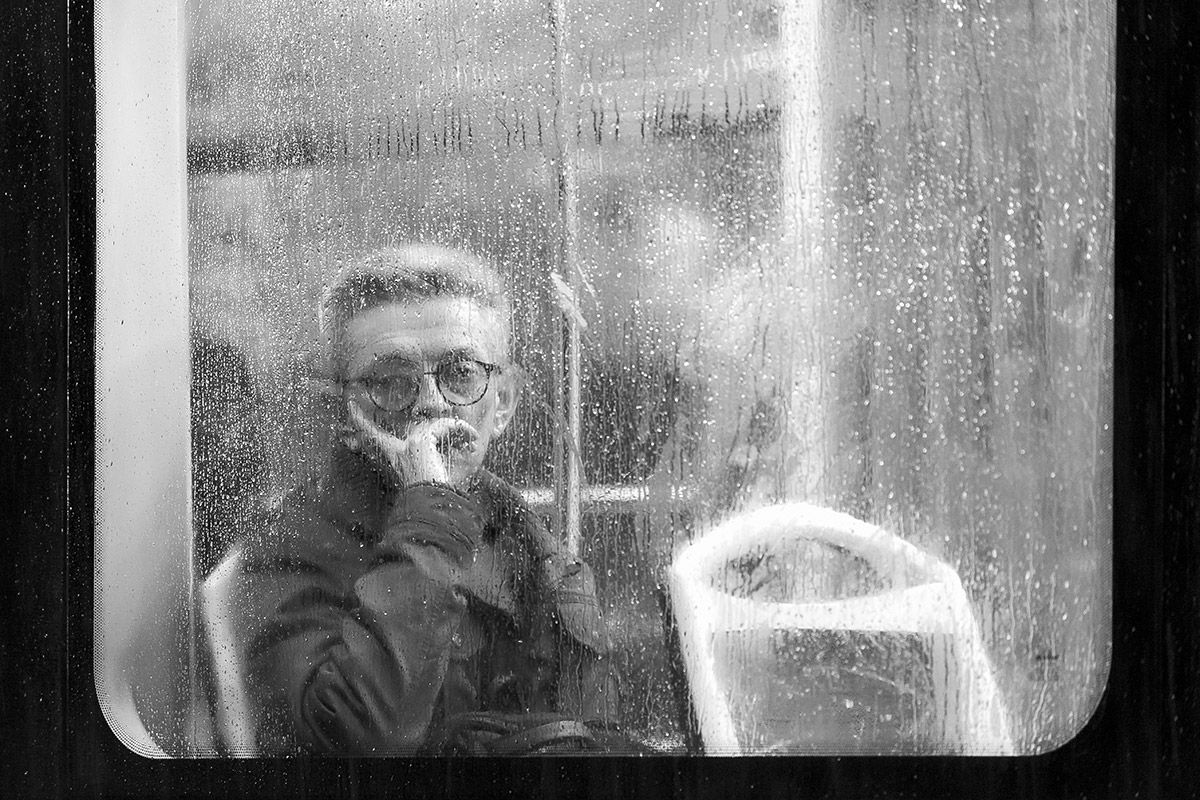
from ‘Rainy Days and Mondays’ © Mary Crnkovic Pilas
While reviewing submissions for Issue 118’s theme, Street Photography, the work of Mary Crnkovic Pilas stood out from the mass of submissions – but not for the criteria I initially expected. The broad topic of street photography has many tropes and themes within, and singular images of people behind rainy, misty, or fogged up windows was common. However, Mary made the theme her focus. Her repetition of the scenes and her skill of capturing the seemingly melancholy emotions of her subjects on the other side of the glass turned potential ‘cliche’ into a strength.
Mary’s images of people allow us as viewers to see their expressions, and be afforded the opportunity to look and connect on a certain level. Thousands of submitted images did not do this, so I feel a photographer who can effectively capture private emotions on public display is worth featuring. It was a pleasure learning more about her creative process and influences in our discussion.
::
Cary Benbow (CB): Who or what are your photography inspirations?
Mary Crnkovic Pilas (MCP): There are many people and things that inspire my photography. Being a musician, music is a huge inspiration for my photography. I often associate various songs or compositions with my work, mostly after having taken the photo, during the editing process, and many of my photos are named after songs. For example, the series featured in this magazine is named after The Carpenters’ song “Rainy Days and Mondays”. That being said, I never listen to music while out taking photos as I feel the sounds of the street inspire my photography.
I adore watching movies so they too are an inspiration for my work, especially film noir movies such as The Third Man, The Maltese Falcon, Sin City…I love the way they use camera angles, light and shadow to create a mood and story.
I also find inspiration in fine art, again, most especially the artist’s use of light and shadow. Particular favourites are the Dutch Golden Age painters such as Rembrandt or Vermeer. In my humble opinion, their use of light and shadow is quite simply incomparable and I am forever learning and inspired by their work.
In terms of other photographers, old school Magnum photographers, such as Henri Cartier-Bresson, Elliott Erwitt, Eve Arnold, Werner Bischoff, Rene Burri, David Hurn, etc. are a huge influence on my work. However, I also love modern photographers that I follow on Instagram such as Alan Schaller, Peter Turnley, David Turnley, Richard Sandler, Rui Palha, Candy Lopesino, Kristijan Smok…
However, the most inspirational photographer for me is Robert Doisneau, so much so that my Insta handle and web site are named after one his quotes – The Marvels of Daily Life. He said “The marvels of daily life are exciting; no movie director can arrange the unexpected that you find in the street” and it pretty much sums up how I feel about street photography.
CB: If these photographers have qualities you admire/desire — how does that ‘inform’ your own creative process?
MCP: First of all, almost all of the photographers I admire photograph in black and white. Having started as a film photographer who also developed and printed my own photos, it felt like a natural progression to photograph in black and white digitally.
When I first started photographing in the 90’s, being the young, wide eyed photographer I was, I bought myself a second hand Leica with a 50 mm, trying in vain to emulate Henri Cartier-Bresson. I literally laugh out loud nowadays when I think about that. However, my favourite lens length is 35 mm, a classic lens length used by many of my favourite photographers. I used a 35 mm length for many years with my Nikon DSLR but a couple of years ago bought a mirrorless Nikon. As Nikon doesn’t make a small lens in this length, I opted for the 40 mm, a really nice length between 35 and 50 mm.
Also, all the photographers I admire are “humanist” photographers. Although I admire many photographers that aren’t necessarily street or documentary photographers, I am always drawn to the human element and story in the photos and photographers that I admire.

from ‘Rainy Days and Mondays’ © Mary Crnkovic Pilas
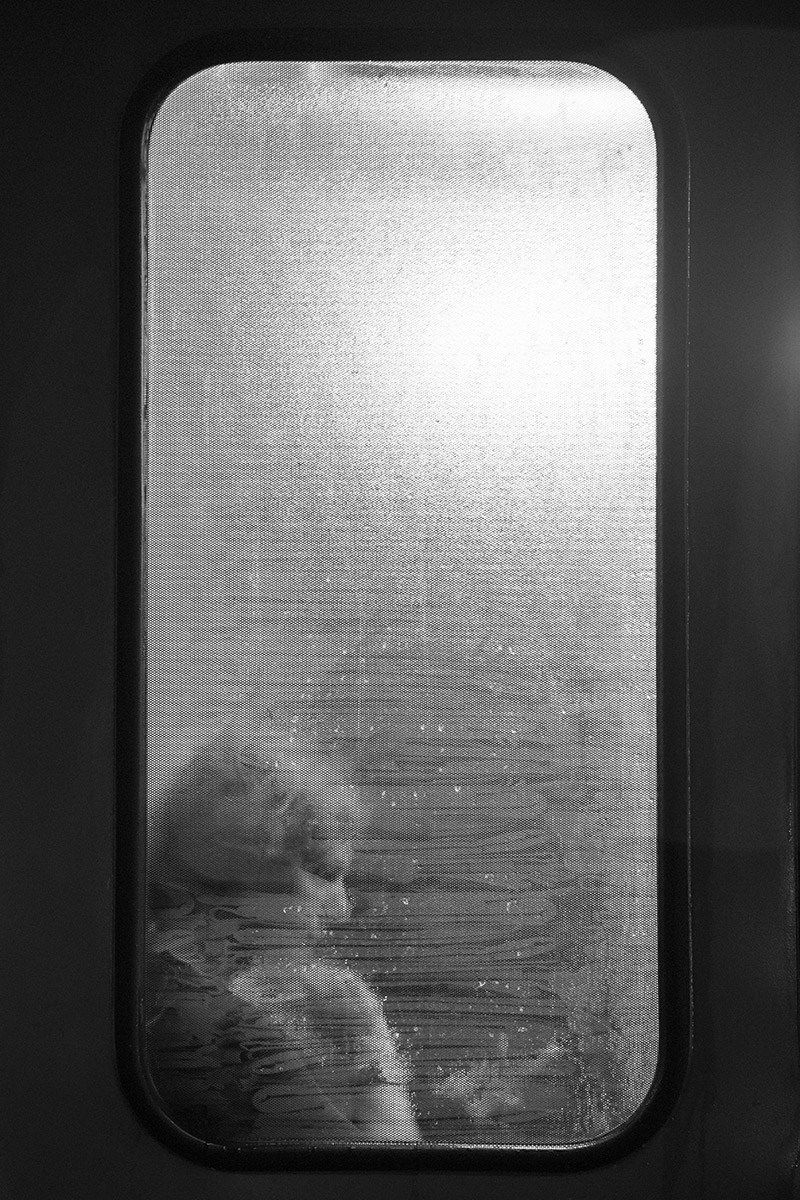
from ‘Rainy Days and Mondays’ © Mary Crnkovic Pilas
CB: Let’s talk about the idea behind your images submitted to this Street Photography issue. How do these images relate to your other projects?
MCP: In the bio of my Instagram page, I describe myself as a “pluviophile”, that is a person who enjoys rain and rainy days, and who is fascinated by the sights, sounds, etc., of rain. While the majority of people don’t like rain and run for cover when the first raindrops start to fall, I am quite the opposite – I run out into the rain with my raincoat and rainboots, camera in hand, to capture its allure.
This series started off quite unintentionally. Although I am a pluviophile, I was more obsessed with umbrellas than fogged up tram or train windows. One day, while waiting for a tram to go an exhibition opening at Zagreb Photo Club, I saw a man sitting on the tram, the window completely fogged up, his bearded profile framed by the window pane. Luckily, I had my camera in my hand and took a few shots. I was really happy with the results and later entered one of the photos into a competition the Photo Club held. It won second prize and then, whenever it got really rainy (whoever doesn’t know, it has to be really, REALLY rainy to create fogged up windows), I would search for fogged up windows in addition to umbrellas. Sadly, for me anyway, it doesn’t rain as often as it used to, so it is getting harder and harder to capture really good foggy windows.
The difference with this series in relation to other series I am working on at the same time is that it is more abstract. In most cases, the faces of the people sitting behind the window are somewhat blurred which is not my usual style. Also, all of them except one are taken with my 70-200mm lens whereas my usual go-to lens is a 40mm. I use this telephoto lens as, in my opinion, capturing people behind windows is somewhat voyeuristic and it also gives me a bit of “room” to be able to capture people candidly and not get my reflection in the window. Another difference is that this series is perhaps somewhat more somber than most of my work. Although I wouldn’t describe all my work as joyful, this is without a doubt the most melancholy – no one is smiling, in fact, most of the people have a frown or a sad, wistful look on their faces. This is why I called this series “Rainy Days and Mondays”, as the words to The Carpenters’ song seem fitting to the mood of the people I have captured. However, the series is similar to my usual style of work in that it is black and white and all photos are scenes of unposed, candid everyday life.
CB: What inspires your art, or what kind of stories do you wish to tell?
MCP: My inspiration is what I like to call extraordinary ordinary life, that is, ordinary scenes and people that we see around us every day that we perhaps don’t pay enough attention to but can be, if seen with different eyes, extraordinary. Or as Diane Arbus said, “I really believe there are things nobody would see if I didn’t photograph them.”
I would like to tell little stories of ordinary people on the street because everyone has a story to tell but not many people are willing to “listen”. My greatest hope is that when people see my photos they make up little stories about those people in their head. I have to say, I do it all the time, lol.

from ‘I read therefore I am’ © Mary Crnkovic Pilas
CB: This is a similar question, but ‘why’ do you photograph, or what compels you to make the images you create?
MCP: I first started taking photographs when I moved to Croatia as it was so very different to my native Australia, I was compelled to take photos of the most mundane objects and situations so as to document all these, to me, weird and wonderful things. A few years later I bought my first DSLR, the Leica R4, as I couldn’t, and still can’t, afford the M series, along with a 50 mm f2 lens, and took lessons at the Zagreb Photo Club. I then had a very long break due to family and work obligations but after walking the Camino Portugues in 2016, my love of photography reignited and, since then, hasn’t stopped, in fact, it has grown even more.
The main reason that compels me to create the images I create is that, as the world is changing at an incredibly fast pace, I almost feel obliged to document the present day for both myself and for future generations to see in the future what life was like at this moment in time. Secondly, I love to observe the human condition, whatever that may be: people waiting for trams, at the market, watching a busker, feeding pigeons… Lastly, as corny as it sounds, I sometimes quite simply like to see what something looks like in a photograph, e.g. a cool shadow or a person’s silhouette.
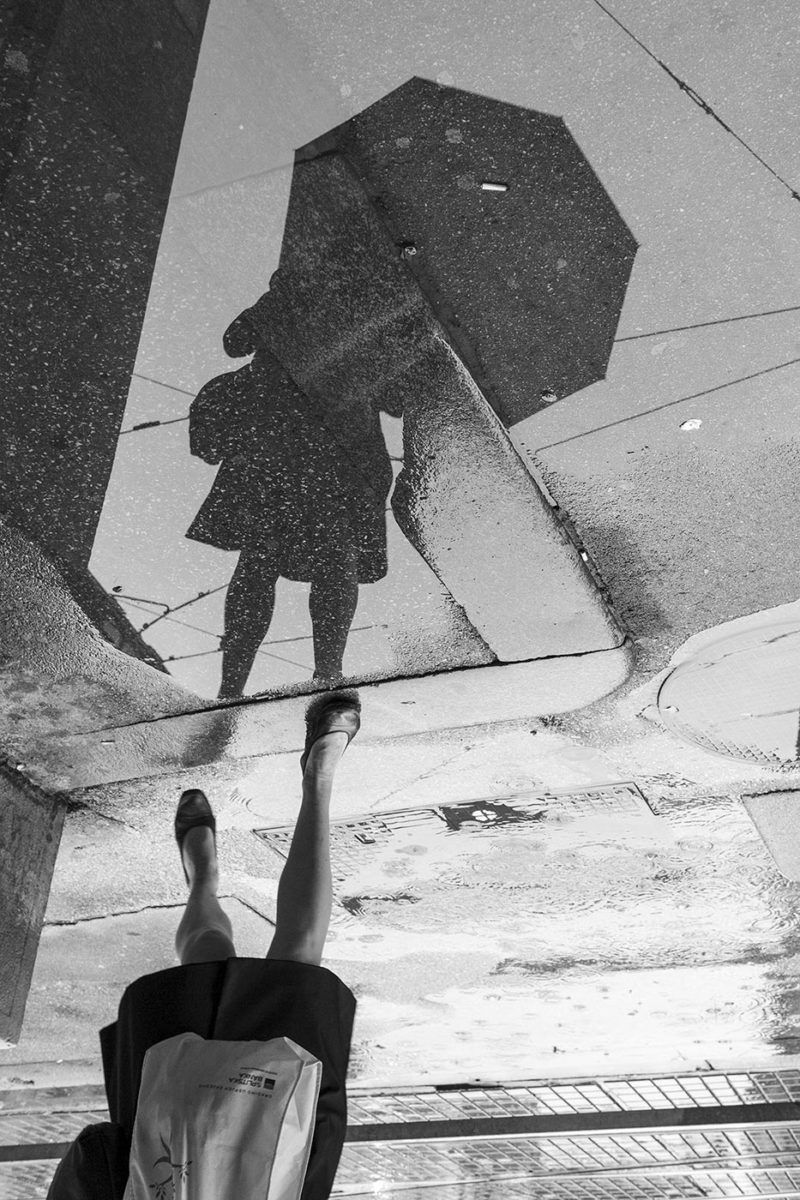
from ‘Rainy Days and Mondays’ © Mary Crnkovic Pilas
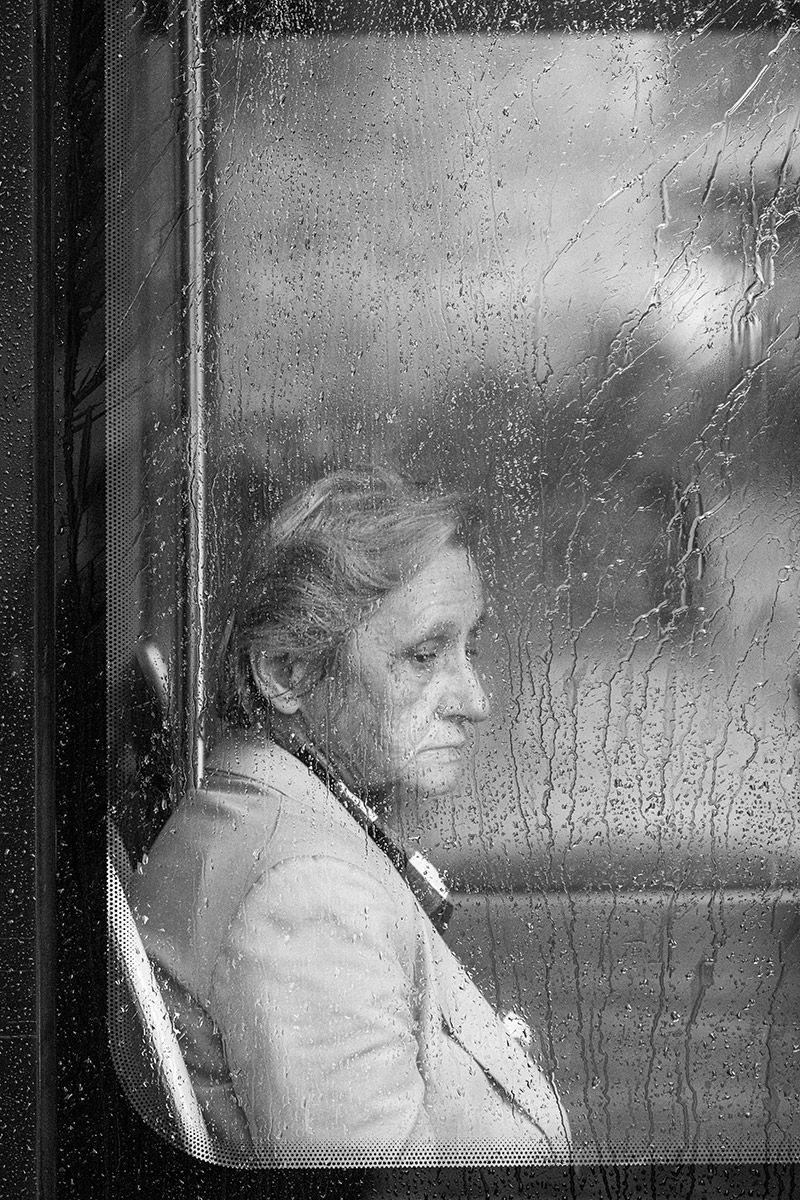
from ‘Rainy Days and Mondays’ © Mary Crnkovic Pilas
CB: In your opinion, what makes a good photograph?
MCP: For me, there must first and foremost be a strong “story” in the photo and it must evoke an emotion. The photo can be beautifully composed, ideally lit and technically perfect, but if it doesn’t have a strong story and if it doesn’t evoke an emotion, I will be in awe for a moment but will forget it in a minute.
Of course, it means a lot if the photo is also good technically, but it is not essential. I am not a fan of hands/feet/heads missing but, if the story in the photo is strong, I will overlook these factors.
I adore light, shadows and contrast, so if a photo has a strong story, is technically well executed and has exceptional light and shadows, it will definitely grab my attention.
I also love when a photographer takes a photo of an ordinary scene or object and elevates it into something more. I always remember André Kertész and his picture of a fork on a plate. He made a work of high art out of banal, ordinary objects. Or as Elliott Erwitt said: “Photography is an art of observation. It has little to do with the things you see and everything to do with the way you see them.”
CB: Since we are focused on a Street Photography theme, what do you feel are the “obligations” of a documentary photographer? Or what obligation do you have to the people in your photos?
MCP: In my opinion, the main obligation of a documentary photographer is to capture scenes that are truthful and real with minimum alterations made to the photo. Of course, every photographer will have a different “truth” in regards to capturing the of the scene as there is no universal truth. However, that being said, removing/adding elements to the photo via Photoshop for example, is not ok. I think it also goes without saying that AI generated images are also most definitely not ok in terms of documentary photography.
I feel it is the obligation of the documentary photographer to be respectful to the people he captures. If someone catches me taking their photo and objects, I will delete that photo. I sometimes take photos of people in compromising situations, such as when they’re sleeping on a park bench, but try to make sure you can’t see their faces or recognise them. I try to put myself in the shoes of the people I photograph – would I like someone to take and then share a photo of me in a compromising situation while I’m out and about on the street?
However, if it is a specific situation, such as a war, it is the obligation of the photographer to take photos of people in all manners of situations, be they compromising or not. Photos have immense power, so much so that they can swerve opinion and change history – who can forget how Nick Ut’s “Napalm Girl” changed the course of the Vietnam War? But in a situation like that, even Nick, after seeing that Phan Thi Kim Phuc aka The Napalm Girl, was in danger of dying, put down his cameras and drove her to hospital. At the end of the day, it’s a documentary photographer’s obligation to also be humane, not just “get the shot”.
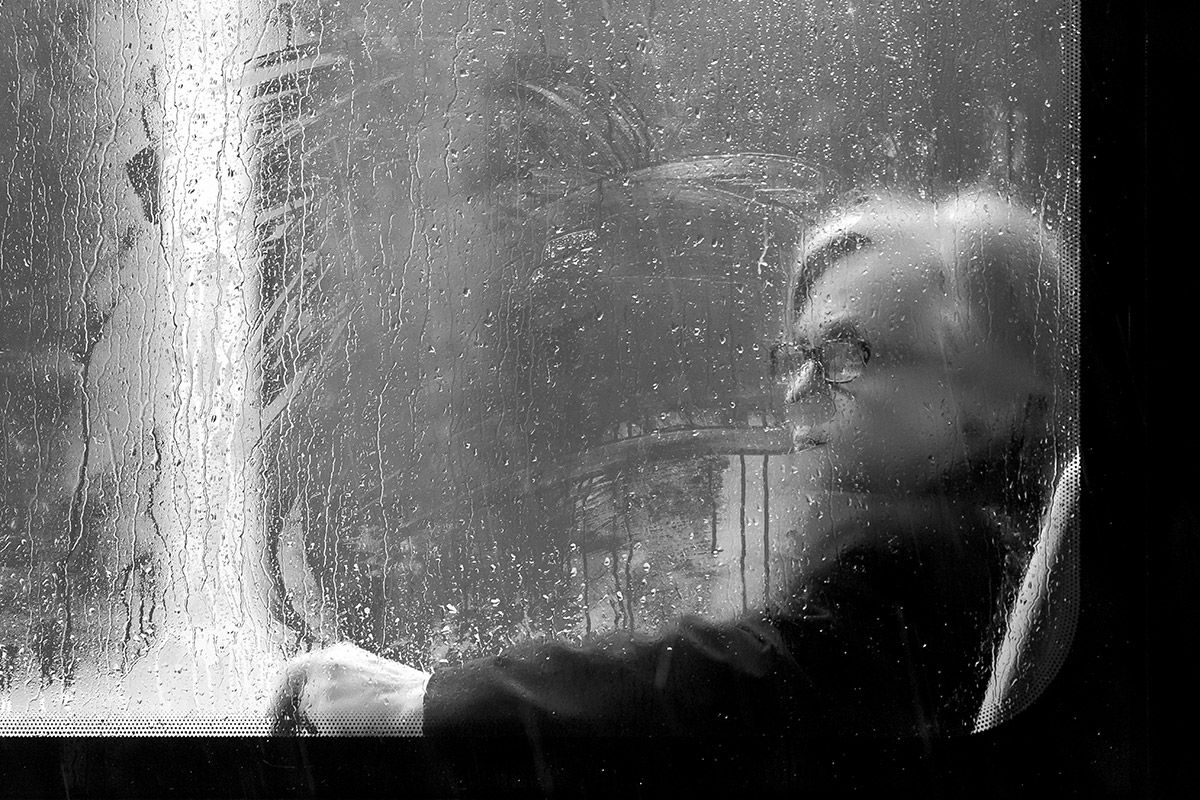
from ‘Rainy Days and Mondays’ © Mary Crnkovic Pilas
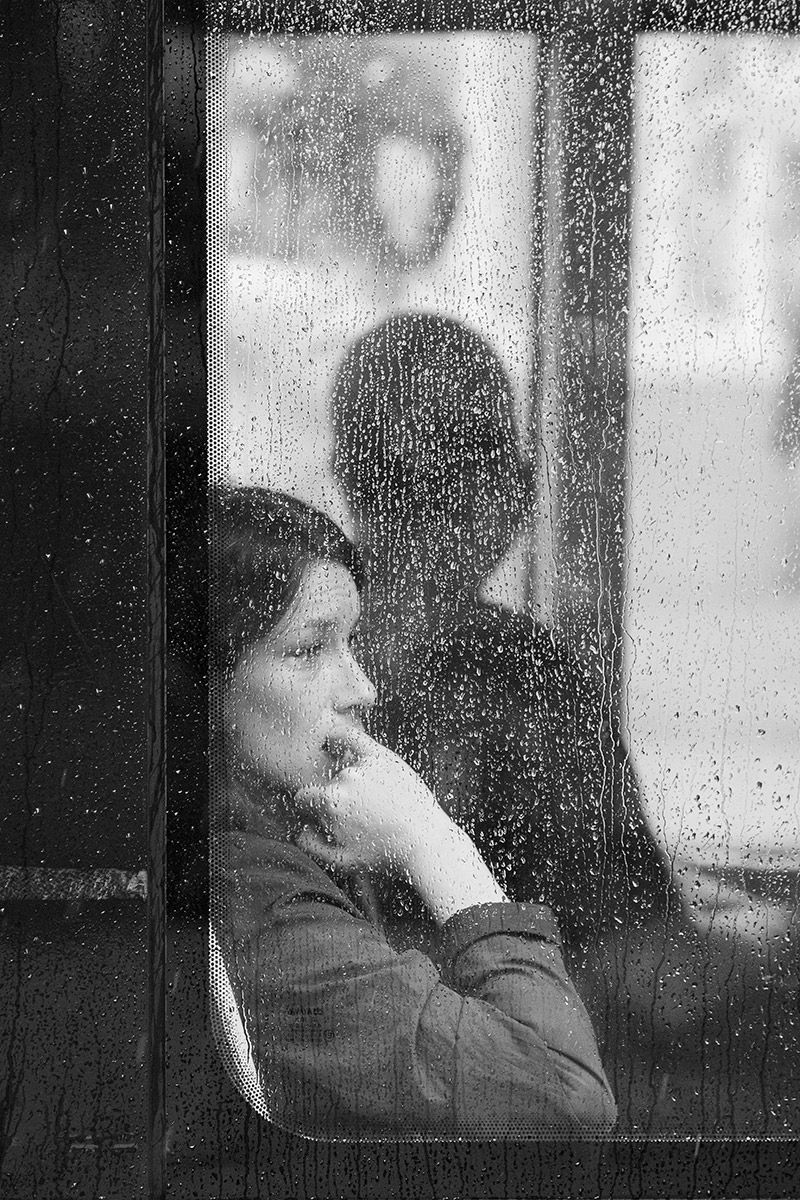
from ‘Rainy Days and Mondays’ © Mary Crnkovic Pilas
CB: What work are you currently working on? Any new projects?
MCP: I am continuing to work in parallel on a handful of projects that I started a few years ago – dogs and their owners, readers, grandmas and grandpas, Dolac Market in Zagreb, Rainy Days and Mondays…a new project I started working on last year is called “The Mothers of Invention” which is about people using various things for a different purpose than they were originally intended, e.g. wearing a plastic bag on their head in the rain or napping with a face mask over their eyes to shield them from the sun. It’s quite hard to find situations like that but I get quite a thrill when I do occasionally come across them and capture them.
CB: If you could give one piece of advice to your younger self at the start of your career, what would it be?
MCP: My first piece of advice would be – don’t give up, make time for doing the things you love. I photographed a lot in the early to mid 90’s but then gave up due to family and work constraints. I truly wish I hadn’t and am glad that I took up photography again.
Also, don’t pay too much attention to the opinions of others, especially people you don’t respect or know, and don’t change your photographic vision to please others. Early on in my photographic career, I would feel hurt by criticism but feel much less so nowadays. I do listen to the opinions of people I respect but not to the people I don’t, even less so the people I don’t know.
Lastly, take the photo and explain, if necessary, later. This is sometimes still an issue for me in that I see a scene or person I feel compelled to photograph and yet don’t because of fear and shyness. Just do it!
::
Mary Crnkovic Pilas was born and raised in Sydney, Australia and moved to Zagreb, Croatia in 1992 after completing her B.A. majoring in Music and French. She has won numerous awards and has been exhibited in Zagreb Photo Club, Rijeka Photo Club, Dakovo Library, Dubrava Photo Gallery, the Goran Terzic Memorial Photo Contest, F.I.A.P., The Other Hundred exhibition in Hong Kong.
Location: Online Type: Black and White, Featured Photographer, Interview
Events by Location
Post Categories
Tags
- Abstract
- Alternative process
- Architecture
- Artist Talk
- artistic residency
- Biennial
- Black and White
- Book Fair
- Car culture
- Charity
- Childhood
- Children
- Cities
- Collaboration
- Community
- Cyanotype
- Documentary
- Environment
- Event
- Exhibition
- Faith
- Family
- Fashion
- Festival
- Film Review
- Food
- Friendship
- FStop20th
- Gender
- Gun Culture
- Habitat
- Hom
- home
- journal
- Landscapes
- Lecture
- Love
- Masculinity
- Mental Health
- Migration
- Museums
- Music
- Nature
- Night
- nuclear
- p
- photographic residency
- Photomontage
- Plants
- Podcast
- Portraits
- Prairies
- Religion
- River
- Still Life
- Street Photography
- Tourism
- UFO
- Water
- Zine

Leave a Reply